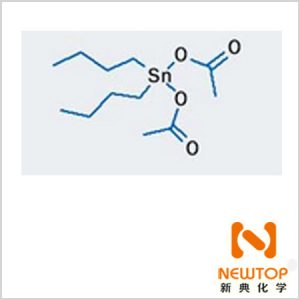Butyl tin acetate

Dibutyltin diacetate, dibutylstannane diacetate; bis(acetyl Oxo) dibutylstannane; dibutyl tin diacetate; dibutyl tin acetate; di-n-butyl tin diacetate; dibutyl tin acetate
Overview:
Dibutyltin diacetate is a light yellow or colorless transparent liquid with an acetic acid odor.
Product name: Dibutyltin diacetate 1067-33-0
English name: Dibutyl tin diacetate
Alias: dibutyltin diacetate, dibutylstannane diacetate; bis(acetoxy) dibutylstannane; dibutyltin diacetate; dibutyltin acetate; two N-butyl tin diacetate; dibutyl tin acetate
Product code: DBTDA
CAS Number: 1067-33-0
Molecular formula: C12H24SnO4
| Chinese name | Dibutyltin diacetate |
| Foreign name | Dibutyl tin diacetate |
| Don’t call | Dibutyltin diacetate |
| CARegistration Number | 1067-33-0 |
| Molecular formula: | (C4H9)2Sn(OOCCH3)2 |
| Molecular weight: | 351 |
| Proportion (H2O=1): | 1.3 |
| Melting point: | 10°C |
Physical properties:
Molecular formula: (C4H9)2Sn(OOCCH3)2
Molecular weight: 351.0
Proportion (H2O=1): 1.30
Melting point: 10℃
Quality index: Appearance: colorless or light yellow transparent liquid Sn content: 32.5±0.5%
Relative density (25℃): about 1.30
Tin content: 32.0-33.8%
Chemical properties:
Melting point: 7-10 °C(lit.)
Boiling point: 142-145 °C10 mm Hg(lit.)
Density: 1.32 g/mL at 25 °C(lit.)
Vapor density: 12 (vs air)
Vapor pressure: 1.3 mm Hg (25 °C)
Refractive index :n20/D 1.471(lit.)
Flash point:>230 °F
Water solubility:insoluble
CAS database: 1067-33-0(CAS DataBase Reference)
NIST: Dibutyltin diacetate(1067-33-0)
EPA: Stannane, bis(acetyloxy)dibutyl-(1067-33-0)
Purpose:
colorless or light yellow transparent liquid, solid and semi-solid below 10℃
Gel catalyst, mainly used as room temperature silicone rubber curing catalyst, especially suitable for deacetic acid type silicone products; its characteristic is that the catalytic speed is faster than dilauric acid Dibutyltin is fast, can be used for polyurethane elastomer, spray rigid polyurethane foam, rigid foam high resilience molded foam, etc. In order to reduce its acetic acid smell, it can be used in conjunction with dibutyltin dilaurate, usually dibutyltin diacetate: dibutyltin dilaurate is 1:9 or 2:8. This product should be tightly closed immediately after use. It is easy to hydrolyze when exposed to the air, and solids will precipitate out of the bottle mouth. It can also be used as a catalyst for polyurethane coatings.
Storage:
Keep dry during storage, and the temperature should be above 10℃. Crystals will be precipitated below 10°C and will not affect the use effect after heating and melting.
Transportation:
Store in an airtight container in a cool, dry place. The storage place must be locked, and the key must be handed over to the technical experts and their assistants for safekeeping. The storage place must be far away from oxidants and water sources.
General-purpose plastic and plastic-sprayed iron drums or glass containers are packaged and transported in accordance with general chemical management regulations.
Packaging:
Packaging: It is suitable to be stored in glass containers, plastic containers, and metal utensils resistant to corrosion by chlorine, and kept tightly sealed. Store in a cool, dry place, keep the container tightly closed, and avoid contact with oxides. Do not inhale dust and avoid contact with skin and mucous membranes. Smoking, eating and drinking are prohibited in the workplace. After work, take a shower and change clothes. Store contaminated clothes separately and use them after washing. Maintain good hygiene habits.


